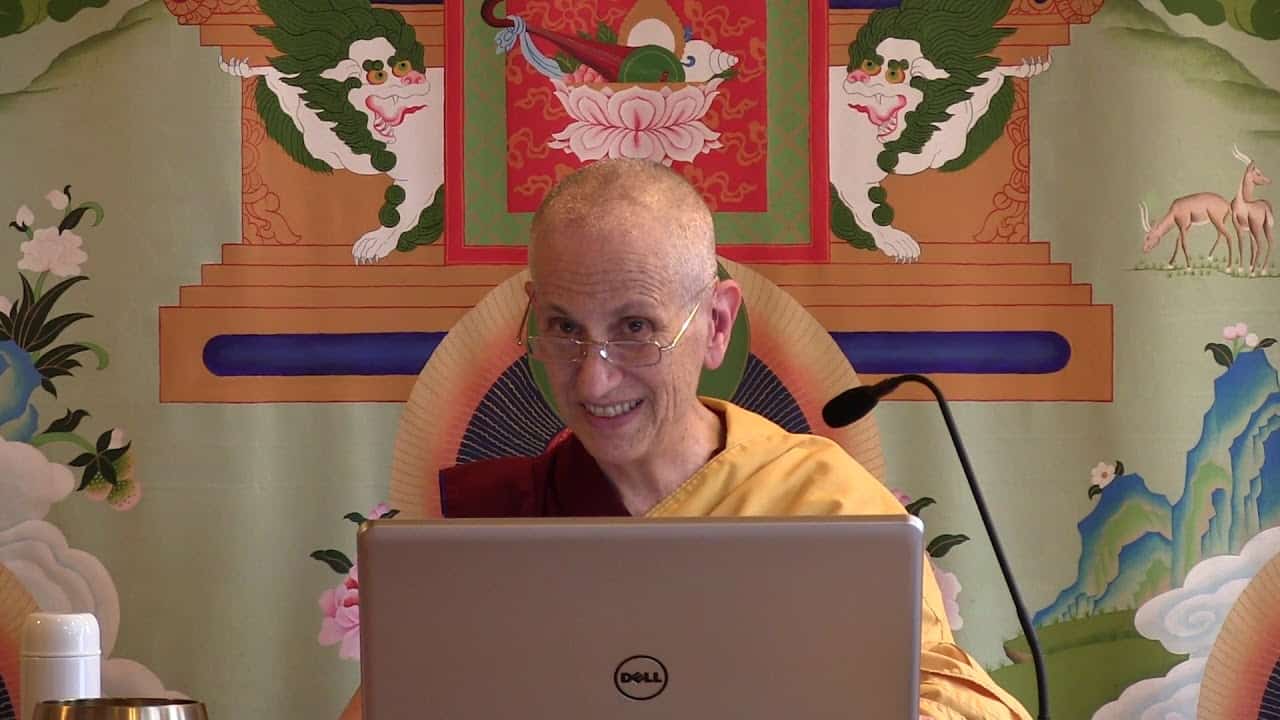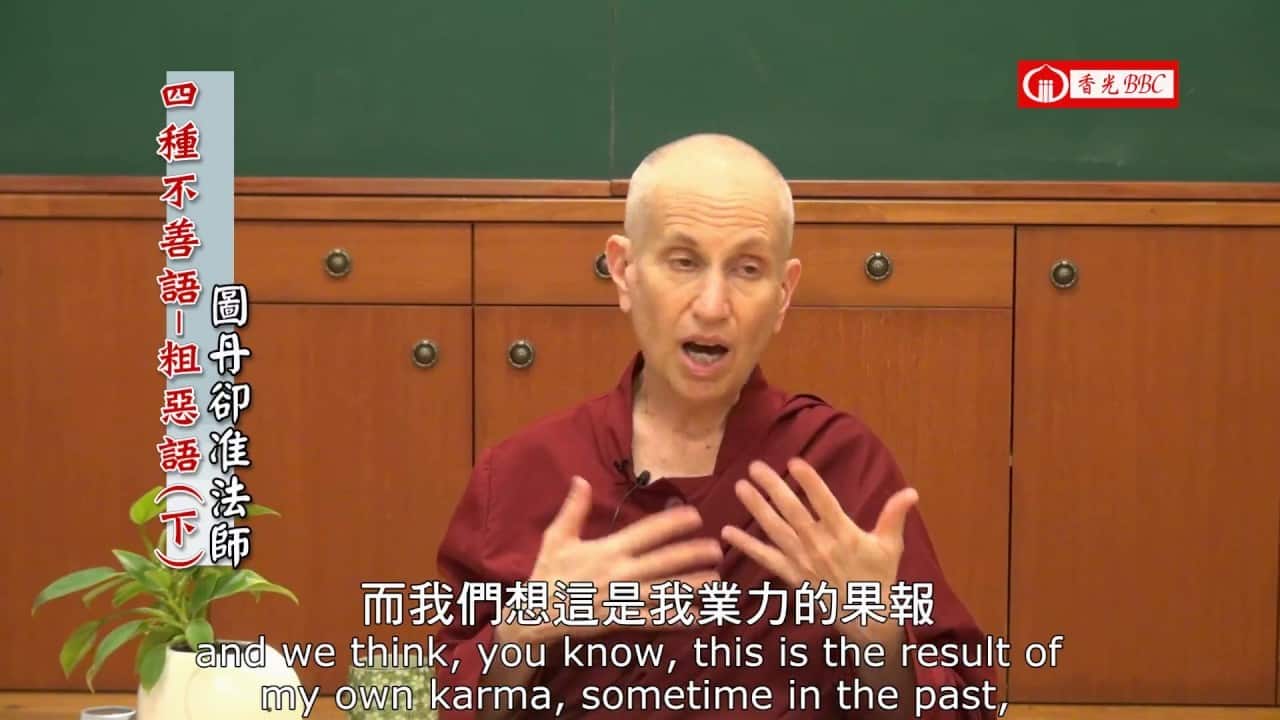Examples of mutual dependence
Examples of mutual dependence
The text turns to training the mind on the stages of the path of advanced level practitioners. Part of a series of teachings on the Gomchen Lamrim by Gomchen Ngawang Drakpa. Visit Gomchen Lamrim Study Guide for a full list of contemplation points for the series.
- Examining causality deeply and recognizing its empty nature
- How we posit objects in relationship to other things
- Virtuous actions are designated as such because of result they bring
- Understanding the basis of designation and the designated object
- Objects themselves and not just words and concepts are mutually dependent
136 Gomchen Lamrim: Examples of Mutual Dependence (download)
Contemplation points
- Venerable Chodron began the teaching inviting us to examine our refuge, which is taken on the basis of having concern about being reborn in the lower realms, recognizing the qualities of the Three Jewels, and (for Mahayana practitioners) compassion. Consider:
- We take refuge at the beginning of all the teachings and sadhanas, but do you take the time to think about these three factors?
- Are you thinking about avoiding only the suffering of this life or do you have the perspective of future lives as well?
- When you have a problem, do you turn to the Three Jewels for a remedy or do you turn to the worldly distraction (refrigerator, entertainment, shopping)?
- Resolve to take time to think about the causes of refuge in your reflections as well as when you recite the verses before the teachings and in your meditation sessions.
- The first type of dependence is “causal dependence,” how effects depend on their causes. This is something we just accept in life – that you have to create the causes in order to have the effect – however, we don’t always act in a way that accords with this understanding. Venerable Chodron said that taking the time to meditate on causal dependence can be quite powerful. Consider:
- Why do you think there is a disconnect in what we know intellectually about causal dependence and how we act?
- Do a life review. Are there experiences in your life where you desired something without recognizing that you had to create the causes for it?
- What aspirations do you have about the future? What causes need to be created in order to experience those results?
- How does a deeper understanding of the emptiness of inherent existence help us better understand causal dependence?
- The second type of dependence is “dependent designation of mutual establishment,” that things are posited in relationship to other things (i.e. there is short because there is long). Think of some of the identities that you hold strongly. These might include your race, gender, ethnicity, religion, political affiliation, position in a family or in a job, etc. For each identity, consider:
- You only hold that identity in relationship to other factors. What are some of those other factors?
- When an identity is challenged, what afflictions arise in your own mind? What negativities do theses afflictions lead you to create?
- How does it make you feel that who you think you are is dependent on things that aren’t you? Does it change the way you relate to that identity?
- The third types of dependence is “dependent designation of mere designation by term and concept in dependence on a basis of designation.” This is the subtlest type of dependent arising. Reflect:
- Identify an object in your surroundings and examine it. Differentiate the basis of designation (the various parts that are put together in a certain way for the object to exist) from the designated object (what we are calling the object). For instance, the example in the teaching was a thermos. The designated object is “thermos” and the basis of designation consists of all the parts that make up the object we call “thermos.”
- Consider how the designated object does not exist from its own side but only in dependence on its parts, upon which we call it that name (which society has previously agreed on as the name and function). For instance “thermos” exists because we have collectively agreed to call anything that has those particular parts in that particular order and keeps liquids at a certain temperature a “thermos.”
- Begin to mentally dissect the object, removing the parts one by one. At what point does it cease being the object? Where did the object go when the parts are disassembled? How can it be that an object is made up of many parts that are not the object itself?
- If things existed inherently, it would have that name and only that name. It couldn’t change or be affected by other things. You could find the object in its parts. You could find exactly what that name refers to and draw a line around it. But when we start searching for what a name actually refers to, we can’t find it. Take some time with this, investigating things in your environment.
- Practice this exercise both on and off the cushion. How might habituating your mind to this way of thinking change the way you relate to the world around you?
Venerable Thubten Chodron
Venerable Chodron emphasizes the practical application of Buddha’s teachings in our daily lives and is especially skilled at explaining them in ways easily understood and practiced by Westerners. She is well known for her warm, humorous, and lucid teachings. She was ordained as a Buddhist nun in 1977 by Kyabje Ling Rinpoche in Dharamsala, India, and in 1986 she received bhikshuni (full) ordination in Taiwan. Read her full bio.


